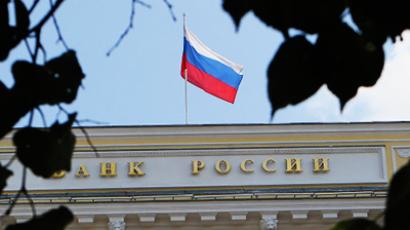Contagion fears in Eurozone mount

The spectre of contagion is again on the loose in European financial markets with Italian sovereign debt spreads widening their highest level against German Bunds ever, and Spanish debt costs rising higher.
With financial markets increasingly risk averse, analysts say Russia needs to be alert.Tuesday is seeing yields on 10 year Bunds down 13 basis points to a seven month low of 2.54%, with Italian 10 year yields pushing 6%. Monday saw the spread between Italian and German borrowing costs rise to more than 3% the highest since the inception of the Euro, with the Spanish benchmark rate also climbing to its highest ever. The solvency crisis which has hammered Greece into seeking two bailout packages, and Ireland and Portugal into seeking one, is becoming the contagion risk that has been warned about since 2009. Spain has made great inroads into addressing its debt, and until recently had been considered a firebreak preventing the debt crisis from spreading further, but the surge in yields required this week add significantly to the debt servicing requirement it faces, with the nation’s housing sector remaining weak.The bond movements reflect increasing concern about Italy’s capacity to service its debt in the wake of confirmation by German Chancellor Angela Merkel, that she had spoken with Italian leader, Silvio Berlusconi on the weekend to add emphasis on the need for Italian austerity measures, with the government currently trying to reach agreement on a 40 billion Euro package. But the turn of focus to Italy has exposed another precarious financing regime. Italy has more than 500 billion euros in bonds maturing before 2015, nearly double the 256 billion euros extended to Greece, Ireland and Portugal to bail out their sovereign debt issues. Its debt to GDP ratio stands at 120%, second only to Greece inside the Eurozone, and its 1.8 trillion euros of borrowings, is more than the combined debts of Greece, Ireland, Portugal, and Spain. Fears about the scope of its debt management requirement have seen shares in Unicredit and Intessa Sanpaulo down more than 20% in little more than a week. On the upside is the fact that most of its bonds are held domestically and it has relatively low levels of household debt.The contagion fears now engulfing Spanish and Italian debts has obscured a continued impasse in securing agreement about how the second Greek debt bailout will be funded, with a group of larger European banks, under the aegis of the Institute of International Finance, holding Greek bonds pushing for the European Union to commit itself to buying back the debt, and warning that unless this occurred borrowing costs for Spain and Italy could surge. InvestCafe analyst Anna Bodrova says the scenario could lead to a major expansion of the EU’s bailout fund, with potentially significant currency movements as a result.“According to European mass media the government has proposed increasing of bailout fund to1.5 trillion euro as a reaction to Italian debt problems. There is no clear solution and decision on situation in Italian economy yet Germany expects Italy to overcome the budget deficit assuming that the first step towards this strategy has been made. We think this program should be expanded and have greater scale. Rating agencies should hold off on rate publishing until the investigation is done and proposals are given. Continues volatility and instability can lead to strong investors’ anxiety and pressure on euro. This will certainly be favored for the Dollar.” Renaissance Capital analyst Ilya Zhila, believes that with most Italian debt held locally, there is more scope for containing risks. “The Italian economy is many times bigger than the economies of those countries that have already received financial aid to restructure their debts and rejuvenate their economy. Consequently, the approved amount of injection of 750 billion Euro will not be enough to bail out Italy, this sum should be doubled. The total debt of Italy is 1.5 trillion euro and this year payment to be closed is around 170-180 billion euro. However, the main debt burden is concentrated in local Italian banks (Inteza, UniCredit Bank) which means that these debts are more or less under control.”Despite the concerns about Italy, Zhila, sees little risk of further Eurozone contagion, but notes that any worsening will see a flight to havens, including US assets, which would impact on the relative value of the US dollar, in which most of Russia’s commodity exports are priced, against the rouble, with demand for Russian exports also likely to be crimped.“If the situation turns into serious trouble than American-Japanese-Swiss assets and currency will be the core favorites. It is obvious that oil and energy will fall in price and affect Russian economy. If we see inflow of funds into shares and quality assets than rouble will slide down. Eurobonds will become cheaper.”Alexandra Lozovaya, head of research at Vektor Securities believes the impact is likely to be short term.“The recent fall of the Italian stock market may cause economic slowdown. According to the latest forecasts the GDP is expected to grow 1%. News about the debt problems of PIIGS countries add significant pressure to the European currency. Yet European financial authorities can keep control over the situation and the future of Euro-currency in the medium term does not cause concerns. But euro may continue to decline over the next two weeks.”














